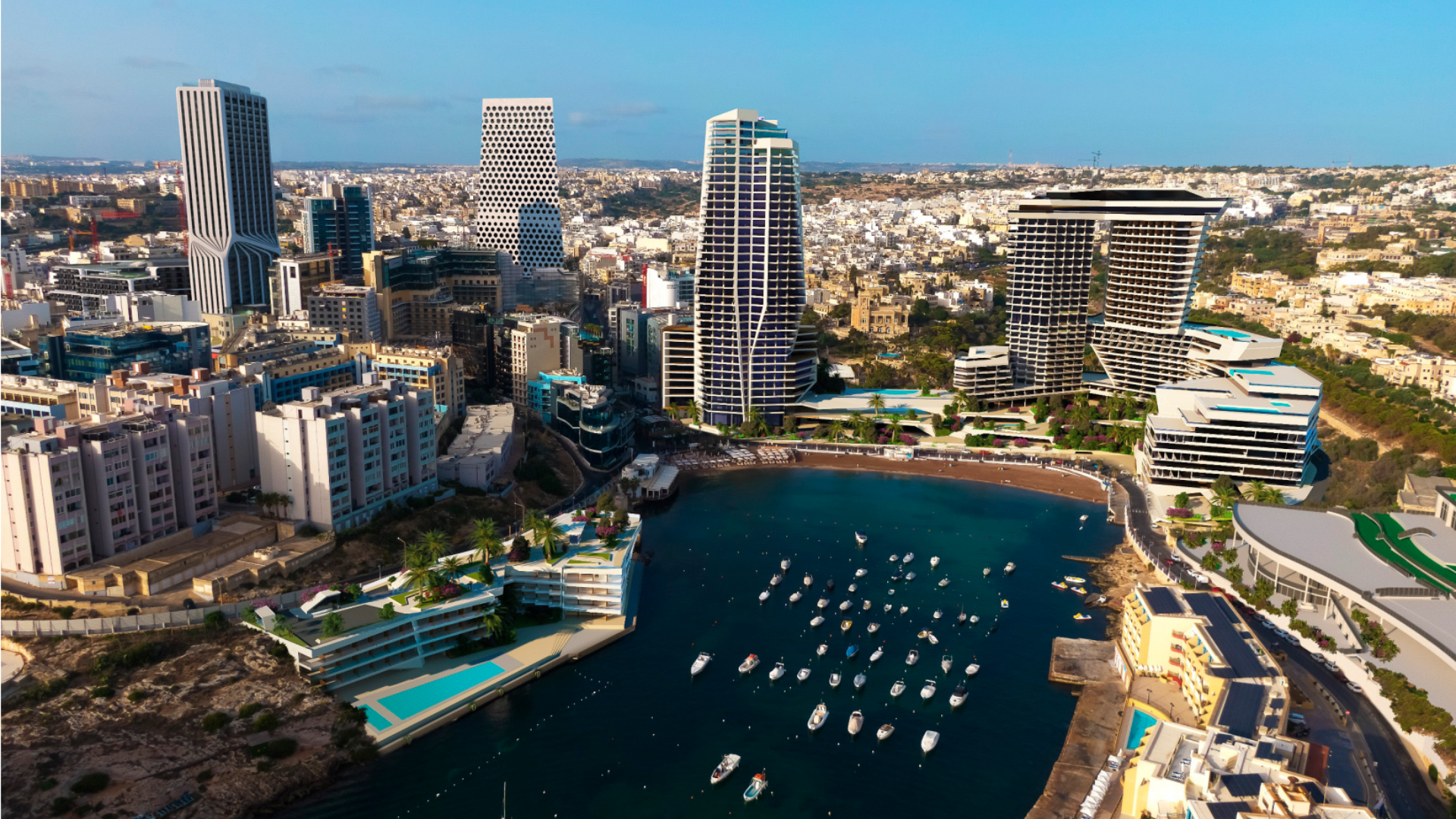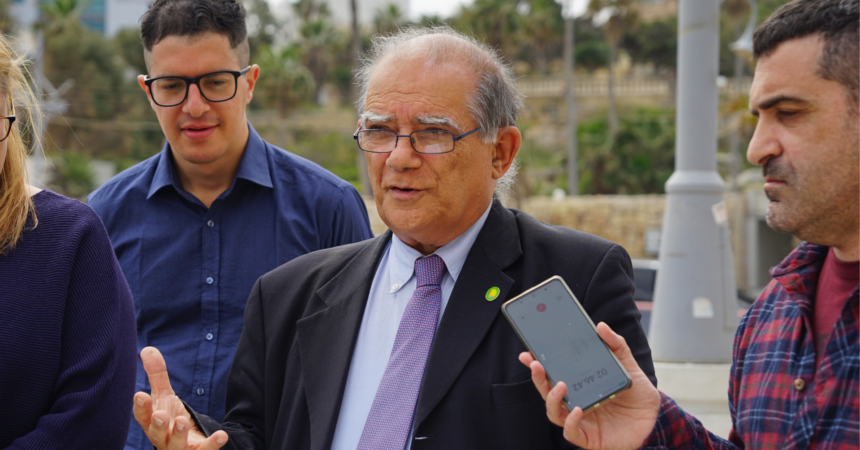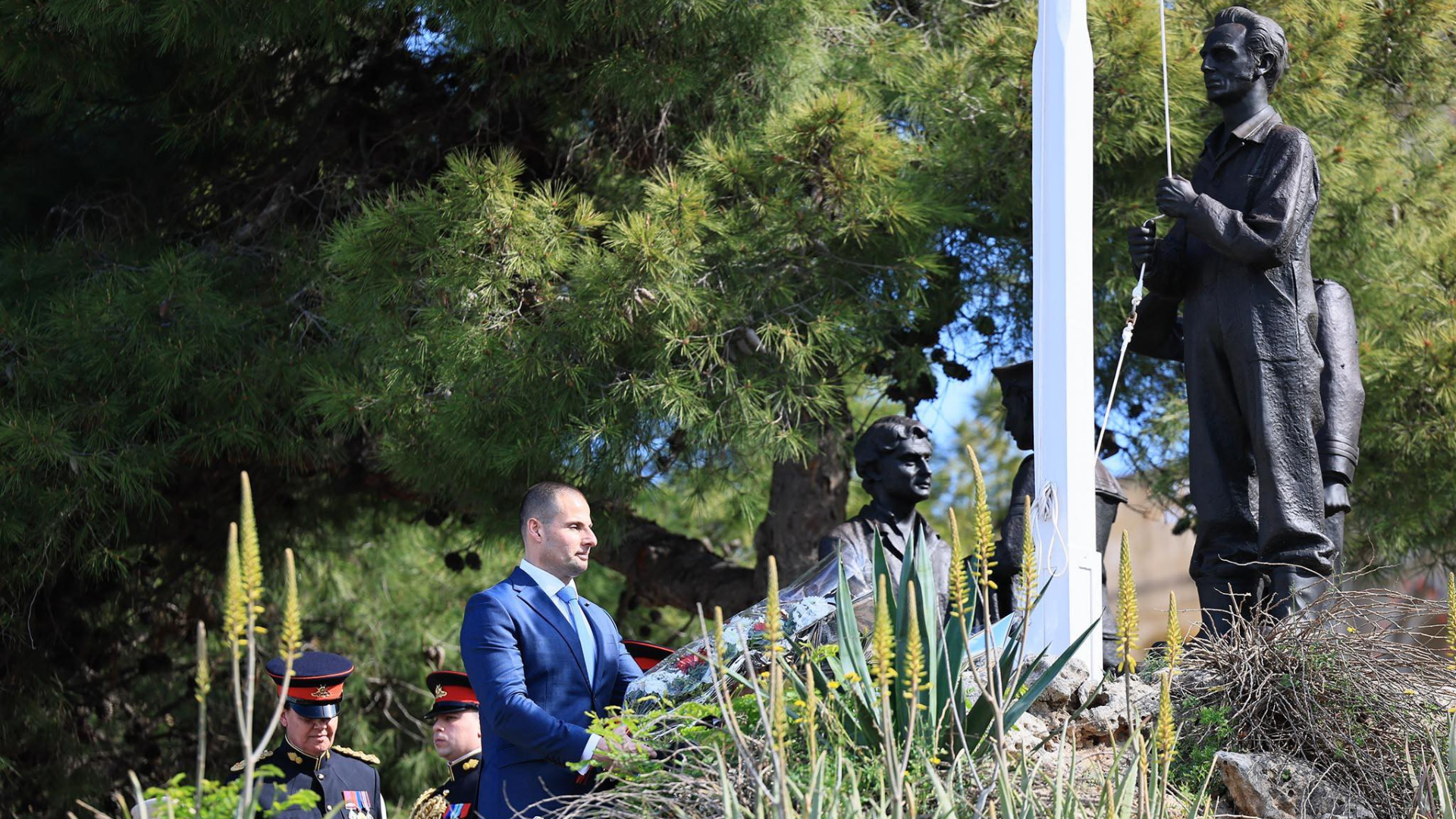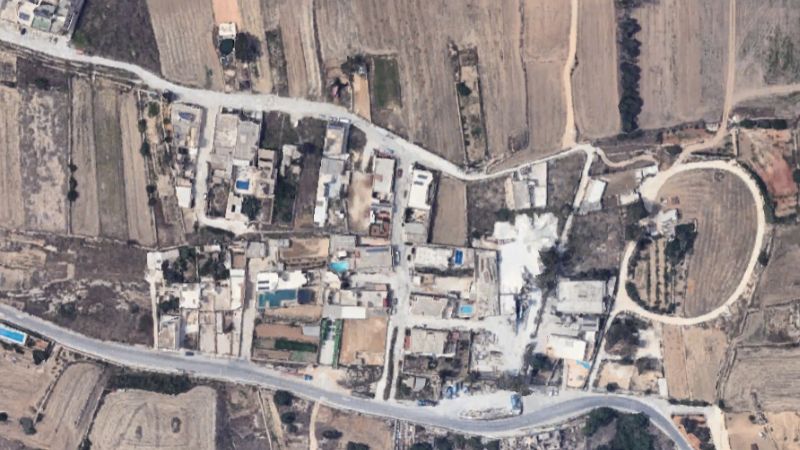ADPD Chair Carmel Cacopardo said that the Villa Rosa mega-project slated for St George’s Bay in St Julian’s is “one of the worst examples of coast commercialisations” in Malta, arguing that “the coast is public and is not there exclusively for money-making” at a press conference on Saturday.
The project proposed by Anton Camilleri’s Garnet Investments includes a 34-storey tower, two 27-storey towers and a hotel developed across two sites, both at St George’s Bay.
It has received backlash from several NGOs and district MPs who have opposed the “atrocious” project and argued that the infrastructure and capacity issues mean that it is “a case of the cart pulling the horse”.

ADPD argued on Saturday against the commercialisation of coasts in front of the Villa Rosa site slated for development
An Environmental Impact Assessment published by the Environment and Resources Authority on 10 March found that the project would have temporary or permanent negative effects in all 38 different types of impact surveyed.
Cacopardo, along with ADPD Deputy Secretary Dr Melissa Bagley, said that the “public purse will be expected to foot the bill for the upgrade to the infrastructure required to support such a development,” arguing that St Julian’s current infrastructure is “already past its saturation point”.
They argued that more tourist accommodation is no longer needed, as a Deloitte-MHRA study found that almost five million tourists would be needed annually for all current and proposed accommodations to reach an 80% occupancy rate.
They called additional proposals “pure madness. It would mean more than doubling the current number of tourist arrivals”. “unbridled speculative development is killing the goose that lays the golden egg – our country’s character,” they said.

A holistic view of proposed mega-developments in St. Julian’s, the Villa Rosa site can be seen abutting the bay – Photo: ERA
Cacopardo described how the proposed development is incompatible with several of the government’s own initiatives and frameworks, citing Miriam Dalli’s 2018 proposal to cut automotive carbon emissions by 40% by 2030. “How will this work if such developments include provisions for thousands of cars?” Cacopardo asked .
He also cited the government’s 2017 public domain act, in part designed to safeguard coastlines and particular sites, and reminded that “not even one site has been declared as protected under this law yet”.
“Why approve such laws if there is no intention to implement them?” asked Cacopardo.
In comments to The Shift after the conference held along the St George’s Bay coast, Cacopardo said that while he is not totally against any developments involving towers, “they must be planned with some thought and in a designated unproblematic area.”

The Villa Rosa site in its current state, with the villa itself largely visible
He also argued that any such developments should not be made piecemeal and should be allowed only following the proper implementation of a mass transport system.
Cacopardo’s argument is backed by previous comments to The Shift made by Architecture Faculty Dean and Din L-Art Ħelwa president Alex Torpiano, who similarly said that proper transportation infrastructure is a prerequisite to any such developments.
The Villa Rosa project, PA/07254/22, is still in its screening process, which allows for the developers to make drastic changes to the proposal and is not regarded as a complete application. Such requests may also never reach the full application stage.













I wonder why tourists with loads of money would come to Malta to see tall buildings and not find enough room to swim in any one of our splendid beaches.
I used to really enjoy holidays in Malta but I have not been back to Malta since it joined the EU and began to be ruined, firstly ending the unique buses and then by “projects” just like this ruining the environment and uniqueness of what used to be a beautiful Island. Definitely won’t ever come back if this ever goes ahead.